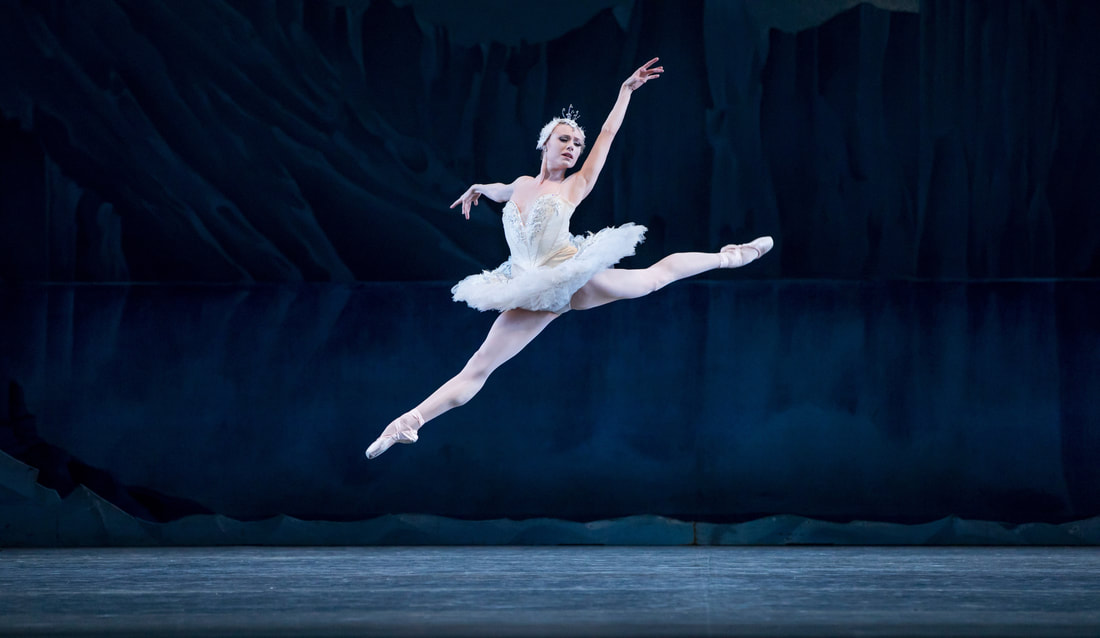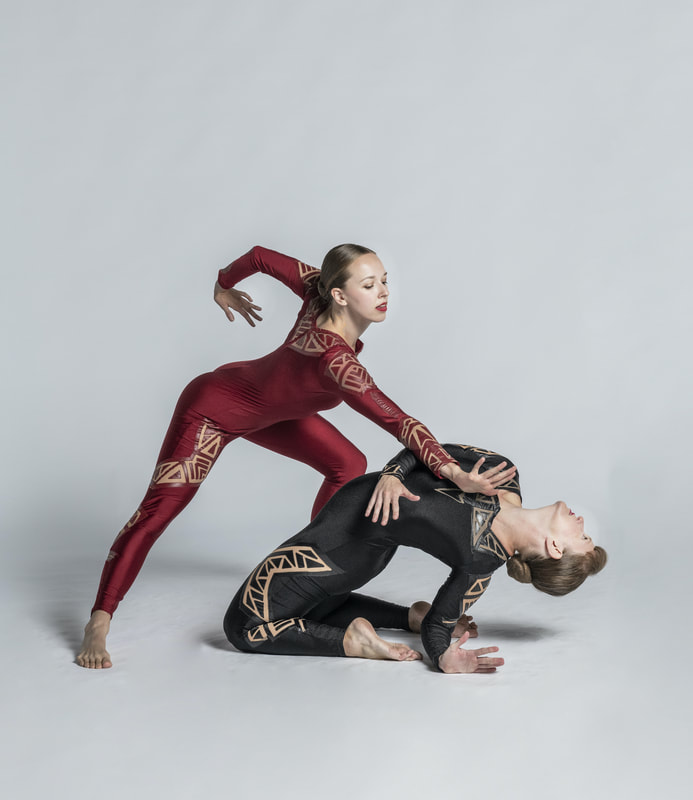|
New York City Ballet principal Sara Mearns danced the bewitched swan in George Balanchine's "Swan Lake" on Sunday afternoon. Only the greatest classicist can seize a master work and refashioned it into something that honors its gravatis and preciousness while successfully preserving it core. It requires a deep knowledge of every aspect of work to reassemble it parts, strip away its sluff and leave only its essence for savoring.
That's what the late George Balanchine, one of the 20th century most important ballet choreographers, did with Tchaikovsky's "Swan Lake." In his hands, the three act ballet has been condensed, some might say crammed as it feels so fleeting, into a 35-minute ballet. He stripped away carousing courtiers, a marriage-minded mother, a pack of princesses and the deceptive other woman. What is left is an unrequited love-story -- a prince who falls desperately in love with an enchanted swan whom he can never fully embrace. On Sunday at Lincoln Center, New York City Ballet presented his version, which also included a bevy of black swan, rather than the typical white ones. Balanchine gave them plenty to do, including borrowing music from the third act's waltz and pas de neuf and bestowing it the swans, led by the commanding Megan LeCrone and Emma von Enck, who soared through it all. The company adagio master, Sara Mearns, portrayed the swan queen with tenderness, extending every note of the music through each finger tips. She caressed the arm of her her beloved prince Tyler Angle who encircled her again and again. It made one believe in this improbable love. Mearns did appears to struggle a bit on some of the speedier pointe work, but still, she was perfect for the romantic role -- gorgeous, generous and sparkling. She left the audience aching for more. Still, I wish Balanchine didn't toy with the classic. The haunting musical theme elicits goose bumps and the melodies are brilliant, ranging from playful to sinister. And it made me long to see more. Still, if anyone was to mettle with a classic, it could only be Balanchine, the choreographic craftsman with a cleared-eye vision and plan to execute it. "Swan Lake" was preceded by Alexei Ratmansky's "Pictures at an Exhibition," a work in which 10 dancers become as much of an art exhibition as the Wassily Kandinsky paintings that made up its backdrop. The 2014 ballet to music by Modest Mussorgsky is one that is clever in its structure, but also nerve-wracking as some of the lifts appeared dangerous. At times, I thought some women would be dropped on their heads as a few sections looked a tad underrehearsed. Regardless, Andrew Veyette was most enjoyable. He was fierce, attacking the movement as if he planned on crushing it -- and indeed he did -- keeping all eyes trained on him. He was a standout among the men in "Promenade." Pianist Susan Walters accompanied them. She was perfection, as always.
0 Comments
Emily Ginter, standing, with Laura Teeter of the Ellen Sinopoli Dance Company. (Photo by Gary Gold) Ellen Sinopoli Dance Company’s annual spring concert at The Egg in Albany was a special one – not just because this well-respected local ensemble premiered it latest, a collaboration with artist Calvin Grimm, but because one of Sinopoli’s most beloved dancers, Laura Teeter, took her final bow.
A 19-year veteran of the company, Teeter was one of the finest interpreter of Sinopoli’s rather cerebral dances. Teeter poured in emotion into everything, humanizing the choreographer’s sometimes elusive explorations into music and art. She was also a beautiful dancer whose form was luscious, at times, silky, at others, sassy, but always generous and honest. She was the vessel that brought the audience in. And in celebration of Teeter, Sinopoli created a program of four works, all of which featured her – an exhausting feat and final gift to her fans. The centerpiece of the evening was the premiere of Sinopoli’s “Journey” with artist and environmentalist Grimm. Five of his paintings, projected as a backdrop for the dance, expressed nature breaking through and then dissolving. Six dancers, the entire ensemble, responded to the abstractions to otherworldly and hypnotic music titled “Falling Out of Time/A Tone Poem in Voices” by Osvaldo Golijov. The work began boldly with dancers tearing about, seeking survival. The dancers soon discover each other – responding and rolling around on the floor, seemingly part of the earth. As paintings melt into the background and a new one appears, a life cycle of blooming and decaying comes to the fore. The dancers reflect that by emphasizing the force and fire behind nature. They also form patterns that echo those inherent in nature, basically reminding us that we are all connected. “Journey,” like many Sinopoli works, is multi-layered and requires several viewings to take it all in. Still, it’s clear she and Grimm were suggesting our lives journeys are like and linked to nature. The evening opened with “Ghostly Interlace,” a 2021 duet with Teeter and Emily Gunter. The piece, to another Golijov composition, this time cello and marimba, has the pair shadowing and absorbing each other’s movement. The duet, that starts simply with a walk and ends with the two resting upon each other, is like watching an afterimage form and reform. It was fascinating. My favorite part of the evening, however, was the revival of “Brink,” a group work from 2009, in which Sinopoli lets her hair down and simply moves her dancers to the music of jazz trumpeter Dave Douglas. With hips swaying, fingers wagging and big bold kicks, the dancers delightfully sashay to the music. It’s freeing, fun and one of Sinopoli’s best works. The evening also including “Balancing on the Head of a Pin” from 2023. The work’s industrial feel has five dancers contracting and expanding on a dystopian world to music by Julian Brink. And every step of the way, Teeter held sway. She will be missed. |
Wendy
|


 RSS Feed
RSS Feed
